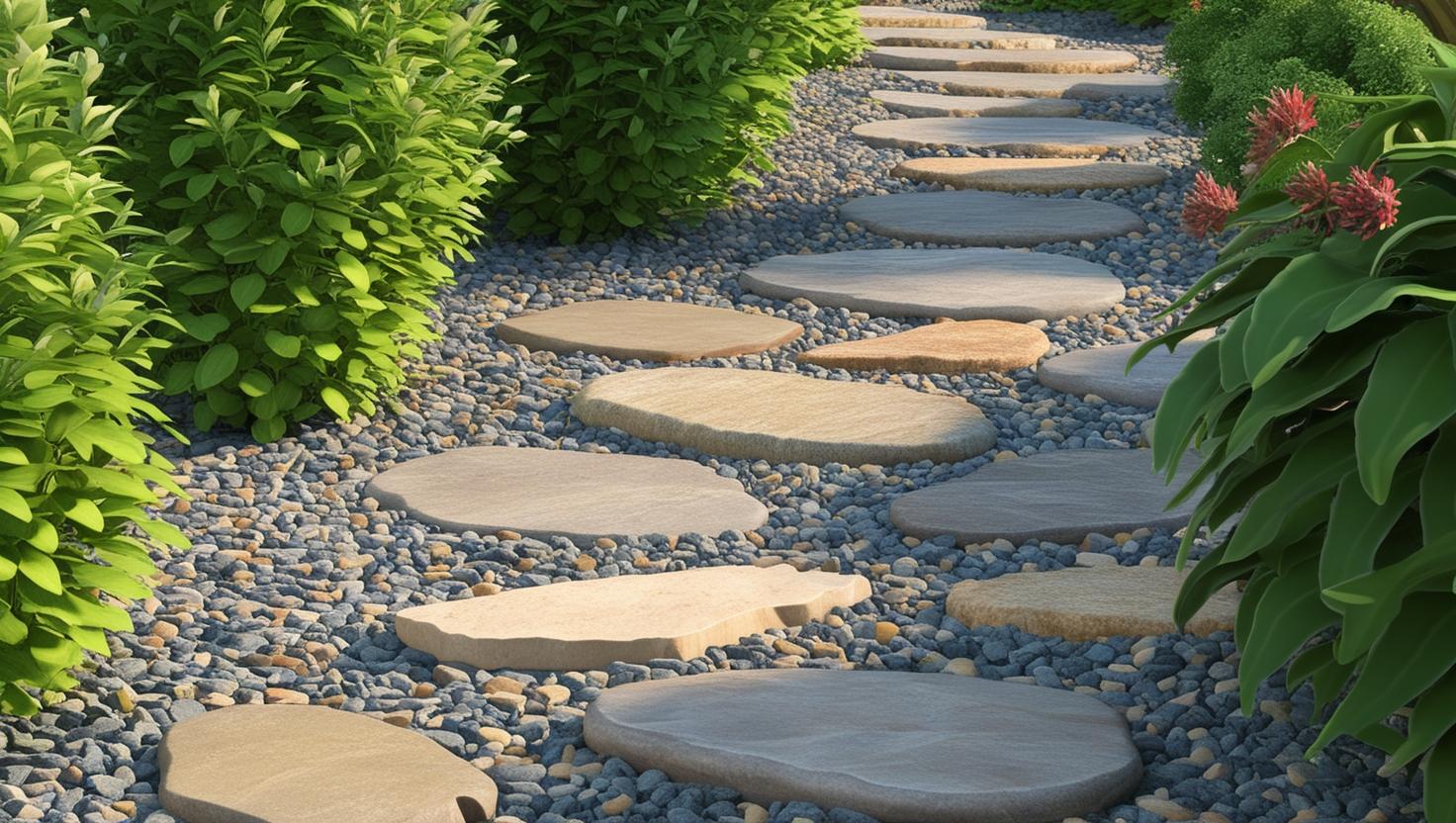- Login
- Register
Natural Stone Pathway Inspiration: Durable & Beautiful Walkway Ideas for Your Yard

Natural stone pathways are a timeless addition to any outdoor space, blending durability with unmatched beauty. Whether you’re designing a rustic garden trail or a modern entryway, natural stone offers versatility and longevity. In this guide, we’ll explore design ideas, popular stone types, installation tips, and maintenance practices to help you craft the perfect walkway for your yard.
Why Choose Natural Stone for Pathways?
Natural stone is a top choice for outdoor pathways due to:
-
Durability: Resists weathering, heavy foot traffic, and temperature fluctuations.
-
Aesthetic Appeal: Offers unique textures, colors, and patterns for every style.
-
Variety – Available in different textures, colors, and finishes.
-
Eco-Friendly: A sustainable, long-lasting material with minimal environmental impact.
-
Low Maintenance: Requires occasional cleaning and sealing to retain its beauty.
Popular Natural Stone Types for Pathways
1. Flagstone
-
Appearance: Flat, irregular slabs in earthy tones like tan, gray, and red.
-
Best For: Rustic, organic designs.
-
Pros: Slip-resistant, durable, and versatile.
-
Cons: Requires professional installation for uneven surfaces.
2. Slate
-
Appearance: Sleek, layered stone in shades of gray, blue, or green.
-
Best For: Modern or contemporary yards.
-
Pros: Water-resistant and easy to clean.
-
Cons: Can chip if exposed to heavy impacts.
3. Limestone
-
Appearance: Soft, neutral hues like beige and cream.
-
Best For: Classic, elegant landscapes.
-
Pros: Smooth surface, ideal for formal gardens.
-
Cons: Prone to staining if unsealed.
4. Sandstone
-
Appearance: Warm, textured surfaces in red, yellow, or brown.
-
Best For: Mediterranean or desert-themed designs.
-
Pros: Affordable and slip-resistant.
-
Cons: Less durable in freeze-thaw climates.
5. Granite
-
Appearance: Polished or rough-hewn surfaces in speckled grays and blacks.
-
Best For: High-traffic areas and modern aesthetics.
-
Pros: Extremely durable and weather-resistant.
-
Cons: Higher cost and heavier weight.
Design Ideas for Natural Stone Pathways
1. Curved Garden Pathways
Create a whimsical feel with winding flagstone or slate paths edged with wildflowers or ground cover.
2. Stepping Stones with Gravel
Pair irregular stone slabs with gravel filler for a low-maintenance, textured look.
3. Mosaic Patterns
Use cut stone pieces to craft intricate designs, like herringbone or chevron layouts.
4. Integrated Lighting
Add solar-powered lights or recessed LED strips between stones for nighttime ambiance.
5. Bordered Walkways
Frame limestone or sandstone paths with brick, metal edging, or lush greenery.
Installation Tips for Natural Stone Pathways
-
Plan Your Layout: Sketch your design and mark the pathway with stakes and string.
-
Prepare the Base: Excavate 4–6 inches of soil; add a gravel layer for drainage.
-
Lay the Stones: Arrange stones with 1–2 inch gaps for gravel or ground cover.
-
Secure and Fill: Use polymeric sand or moss to stabilize gaps and prevent weeds.
-
Seal the Surface: Apply a stone sealant to protect against stains and weathering.
Maintenance Guide
-
Cleaning: Sweep debris regularly; wash with mild soap and water.
-
Sealing: Reapply sealant every 2–3 years (depending on stone type).
-
Weed Control: Use organic weed killers or manually remove growth between stones.
-
Repairs: Replace cracked stones promptly to maintain structural integrity.
FAQs About Natural Stone Pathways
1. What’s the most affordable natural stone for pathways?
Sandstone and flagstone are budget-friendly options, starting at 3–3–8 per square foot.
2. Can I install a stone pathway myself?
Yes! Stepping stone designs are DIY-friendly. For complex layouts, hire a professional.
3. Which stone is best for snowy climates?
Granite and slate are frost-resistant and less prone to cracking.
4. How do I prevent slipping on wet stones?
Choose textured stones like flagstone or apply anti-slip sealants.
5. Do natural stone pathways increase property value?
Yes! Well-designed pathways boost curb appeal and home value.
Conclusion
Natural stone pathways are a perfect blend of function and artistry, transforming your yard into a captivating outdoor retreat. Whether you want a rustic stepping stone path or a sophisticated flagstone walkway, Earthstona has the perfect solution for your needs. Explore our collection today and create a stunning outdoor retreat!

